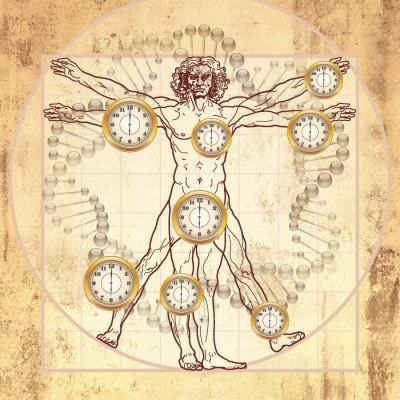Biological DNA Clock Discovered, May Become ‘Important Biomarker’ To Fight Human Aging

A biological clock capable of determining how old different human tissues and cells are has been discovered by a team of researchers from the University of California, Los Angeles.
The findings, published in Genome Biology, show how the UCLA team created the internal clock using a naturally occurring process that alters DNA. The preliminary results may shed light on cancer and stem cell research.
"To fight aging, we first need an objective way of measuring it. Pinpointing a set of biomarkers that keep time throughout the body has been a four-year challenge," Steve Horvath, a professor of human genetics at the David Geffen School of Medicine at UCLA and of biostatistics at the UCLA Fielding School of Public Health, said in a statement. "My goal in inventing this clock is to help scientists improve their understanding of what speeds up and slows down the human aging process."
The clock was created using methylation, a biochemical process that modifies stretches of DNA and can identify what parts of cells perform certain functions. Using 8,000 tissue samples collected earlier from both healthy and cancerous tissues, Horvath analyzed them using 353 markers that change with age.
Horvath soon discovered a pattern when he compared the tissue’s biological age with its chronological age. While most of the ages matched, Horvath was surprised by several that didn’t. Female breast tissue, for example, aged faster than the rest of the body, appearing two to three years older.
"If a woman has breast cancer, the healthy tissue next to the tumor is an average of 12 years older than the rest of her body," Horvath said, noting that the results may shed light on why age is a primary risk factor for one of the most common types of cancer among women.
Other tumors from different cancer types were on average 36 years older than the rest of the body. Hearts appeared younger than they actually were. “They looked an average of nine years younger,” Horvath told NBC News. “It’s really striking. I don’t know why, but it looks younger.”
While the results are intriguing, they are still preliminary.
“The general idea that you can read a genome and it reflects the aging process is probably correct,” Darryl Shibata, M.D., professor of pathology at the University of Southern California’s Keck School of Medicine, who has reviewed Horvath’s work, told Forbes. “But the weakness is that this study doesn’t provide a mechanism, and without a mechanism it’s just a correlation.”
That is, while DNA methylation occurs with aging, the clock’s discovery does not prove that one causes the other. Horvath agrees.
"Does this relate to something that keeps track of age, or is a consequence of age? I really don't know," Horvath told the Guardian. "The development of grey hair is a marker of aging, but nobody would say it causes aging," he said.
Horvath says his next studies will focus on stopping the body clock to see whether that stops the aging process altogether.
"The big question is whether the biological clock controls a process that leads to aging," Horvath said. "If so, the clock will become an important biomarker for studying new therapeutic approaches to keeping us young."
© Copyright IBTimes 2024. All rights reserved.






















